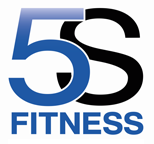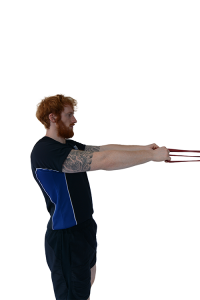Band Face Pulls
Face pulls are one of the best exercises to rehabilitate and develop your upper back and shoulders.
The rotator cuff is four deep muscles responsible …for stabilising the shoulder joint, as well as both internal and external rotation.
The internal rotator, along with your chest muscles, often gets plenty of work (due to all that pressing), whereas your external rotators are often underworked, which can result in postural issues.
 It’s these postural issues that can cause all sorts of problems when you start to bench press and overhead press at the gym. People often say, “the bench press is bad for your shoulders”, but in actuality, it’s poor posture and poor lifting mechanics/technique on the bench that is bad for your shoulders.
It’s these postural issues that can cause all sorts of problems when you start to bench press and overhead press at the gym. People often say, “the bench press is bad for your shoulders”, but in actuality, it’s poor posture and poor lifting mechanics/technique on the bench that is bad for your shoulders.
It’s vital that we work muscles in a way that specifically target their different roles. The rotator cuff primarily works to stabilise the shoulder joint as it performs various actions. Therefore, it makes sense that we work exercises that not only rotate the shoulder, but also requires stabilisation as the elbows bend and extend and the shoulders retract and protract – the band face pull executes this perfectly and also applies accommodating resistance.
“Accommodating resistance”, so the resistance will increase as you progress through the exercise. This helps to maximise the contraction of the muscles at work, as you get to the top of the face pull, your rear delts, traps and rhomboids are going to have to increase their engagement to overcome the extra resistance as the band tension increases.
1. Use a yellow or red band. You can vary the tension by standing closer or further away from the band attachment point.
2. Attach the band to something solid at chest height, either looping the band around and holding both ends, or looping the band through itself so you have hold of one end of the band with both hands.
3. Facing the attachment point, grab the band with an overhand grip. You can grasp the band with just your fingers rather than taking a full grip. This will help to encourage the upper back to work as the primary mover rather than the biceps.
4. Step backwards to apply tension to the band.
5. Keep your chin back.
6. Pull backwards and slightly up to bring yourself into a double bicep pose position. Maintain good head posture, pull your hands back to your temples and don’t push your head towards the band.
7. Ensure you consciously engage your upper back and rear delts, rather than just pulling with your biceps – think about the muscle you are working to increase its engagement (mind-muscle connection).
8. Return to the starting position under control, allowing your shoulders to extend slightly.
9. Complete 2-4 sets of 10-20 reps.

